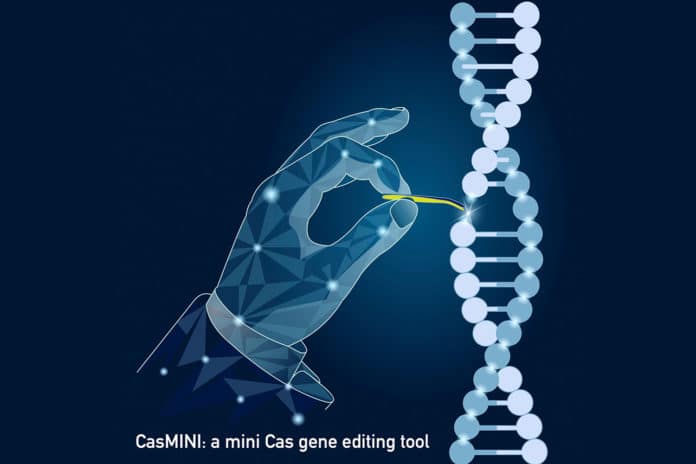Many CRISPR gene editing systems are currently being used for various gene therapy. Although, those systems have limited scope because they are too large and too hard to deliver into cells, tissues, or living organisms.
In a new study, bioengineers at Stanford University have developed an efficient, multi-purpose, mini CRISPR system- a smaller version of the genome engineering tool. Thanks to its diminutive size, scientists could found it easy to deliver into human cells, tissues, and the body for gene therapy.
Commonly used CRISPR systems like Cas9 and Cas12a are made of about 1000 to 1500 amino acids, whereas this newly developed system called CasMINI has 529.
Scientists wanted to make the system as small as possible. To do so, they started with the CRISPR protein Cas12f (also known as Cas14). The Cas12f has about 400 to 700 amino acids. Moreover, it naturally originates from Archaea – single-celled organisms – which means it is not well-suited to mammalian cells, let alone human cells or bodies.
Stanley Qi, assistant professor of bioengineering at Stanford University, said, “We thought, ‘Okay, millions of years of evolution have not been able to turn this CRISPR system into something that functions in the human body. Can we change that in just one or two years?’ To my knowledge, we have, for the first time, turned a nonworking CRISPR into a working one.”
Initially, there was no activity of the natural Cas12f in human cells. Scientists hypothesized that the issue was that human genome DNA is more complicated and less accessible than microbial DNA. This makes it quite tricky for Cas12f to find its target in cells.
Scientists observed the computationally predicted structure of the Cas12f system. They chosed about 40 mutations in the protein that could potentially bypass this limitation and established a pipeline for testing many protein variants at a time.
Hypothetically, a working variant would turn a human cell green by activating green fluorescent protein (GFP) in its genome.
Xiaoshu Xu, the lead author of the paper, said, “At first, this system did not work at all for a year. But after iterations of bioengineering, we saw some engineered proteins start to turn on, like magic. It made us appreciate the power of synthetic biology and bioengineering.”
Over many additional iterations, scientists were able to improve the protein’s performance further.
Xu said, “We started with seeing only two cells showing a green signal, and now after engineering, almost every cell is green under the microscope.”
Along with this, scientists also engineered the RNA that guides the Cas protein to its target DNA. Modifications to both components were crucial to making the CasMINI system work in human cells.
During experiments, the CasMINI could delete, activate and edit genetic code just like its beefier counterparts.
Journal Reference:
- Xiaoshu Xu, Augustine Chemparathy et al. Engineered miniature CRISPR-Cas system for mammalian genome regulation and editing. DOI: 10.1016/j.molcel.2021.08.008
